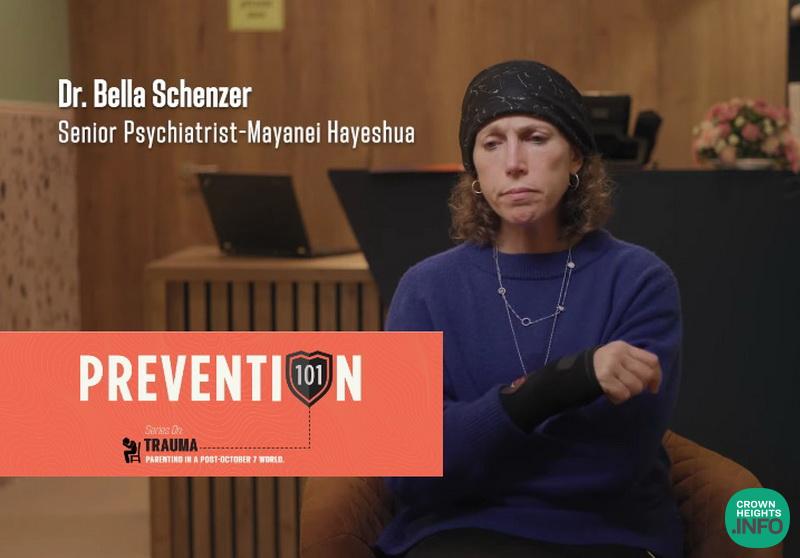
Prevention101: Is It Possible Not To Experience Immediate Symptoms But to Go On To Experience Long-Term Symptoms?
Series on Trauma: Episode 13 – Parenting in a Post-October 7th World. The series addresses questions regarding trauma following the massacre of October 7th and the surge of global anti-Semitism.
Is it possible not to experience immediate symptoms but to go on to experience long-term symptoms?
That would be unusual. Anything is possible, but generally speaking, someone would not necessarily go on to develop post-traumatic stress disorder without any prior symptoms. They may not have an acute stress response, but they will have something. It is possible that they may not recognize that they are having a response. It could be that subtle. They may not realize when they’re hearing the news that their heart rate is increasing. Or they may have a panic attack. It could be anything in between. Those first symptoms are an indication the brain is responding in an anxiety fashion to the trauma. If they eventually go on to develop post-traumatic stress disorder, there was something that happened to them when they first experienced the trauma.
Now, the difference is that it may not be continuous. Meaning, they were exposed to the trauma, and without even realizing it, their brain had some immediate response to it and then it went into quiescence and then those symptoms can reappear months later. We wouldn’t diagnose somebody with post-traumatic stress disorder unless it had been six months since the trauma.
This is a phenomenon that occurred with Vietnam veterans. Their symptoms were in quiescence for years, and then in the context of life issues—perhaps they came back from Vietnam, got married, had children, and then lost a job or got a divorce—all of a sudden, the trauma that they had, the response to the trauma that they had been suppressing or trying to suppress all these years started coming out and manifesting as external symptoms that then brought them into treatment. These situations are not typical. More often than not, the symptoms present within six months to a year after the trauma.
What I’ve been describing is the typical sequence when the trauma is a single event. One of the biggest issues with October 7 is it has not been a single event. One of the hardest parts about this particular trauma is it’s not a trauma, it’s a very complex multifocal crisis. We have what happened on October 7 itself, the massacre beyond words, beyond comprehension, and then subsequently, we’ve had the world’s response to it, which was not particularly as strong as it should have been considering what happened. Then, we have the war that’s going on in Israel with the associated missile attacks. We’ve seen this rise in anti-Semitism with pro-Palestinian marches that have a very anti-Israel, anti-Semitic tone to them. All of which are more and more circles of trauma that extend the original trauma. In other words, the trauma has not yet ended. We are still in the trauma. There is still a war going on. There is still anti-Semitism being expressed on all levels.
Once we’ve gone through this type of event and seen the response from our neighbors, our classmates, and our teachers, how do we ever put this type of thing behind us? How do we know when the trauma has ended? I’m not sure how to answer that, but as a diagnostician and as a psychiatrist, this is something that I’ve been grappling with in my own mind. How do we know when we start pivoting toward healing when the crisis is still so present and there doesn’t seem to be kind of a timeline for it to end? I don’t have those answers, but continued communication and checking in with our family, friends, and community will help us navigate this situation.















